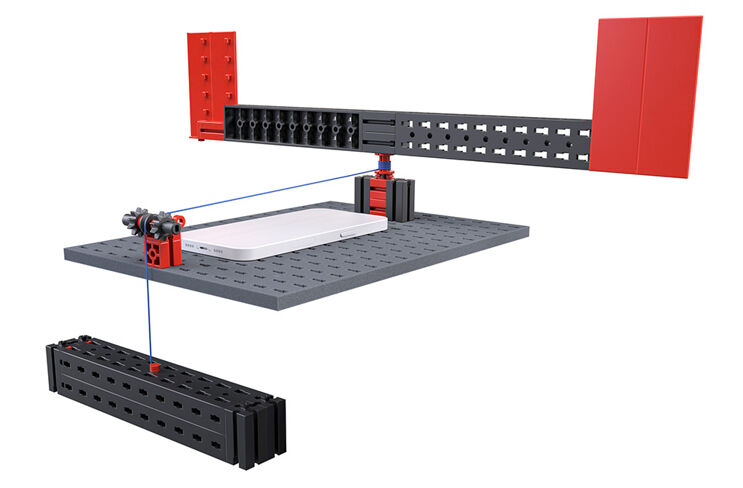
- Products
- Toys
- Schools
- Industry and Universities
- ft Design Studio
- Service
- fischerTiP
The pupils are to build a rotating boom, adjust this and examine its characteristics. The larger the paddles are, the greater the air resistance and the lower the final velocity. If the weight of the drive is increased, the maximum velocity increases.
In addition, the equilibrium of forces between the gravitational force (drive) and the friction forces (air resistance) and the inner forces can be discussed. Only through rotation with angular velocity, however, and not with the velocity of a linear movement as assumed in school books.
If there is more than one layer of thread on the coil, the torque exerted by the thread on the coil changes, making the measured values less accurate. This means in the best case, only one layer of thread is on the coil and the rest is stowed e.g. on the weight.
Weights can be attached to the brackets to examine the moment of inertia. In this case, it takes longer for the maximum velocity to be reached.
In addition, the distance between the resistance plates and the centre point can be varied. This results in different velocities and different frictional forces that can also be simulated by the equation.
The tasks are set in a very closed way for the pupils. More open tasks are possible for more own exploration. For example, the following can be asked as an introductory question “Which parameters on the experimental set-up can you change?” (weight and size of the plates). These parameters can then be examined in more detail.

The pupils
About 15 minutes are needed to build the rotating boom.
The experiments can be carried out within 20-30 minutes. Then it is still possible to confirm the results.